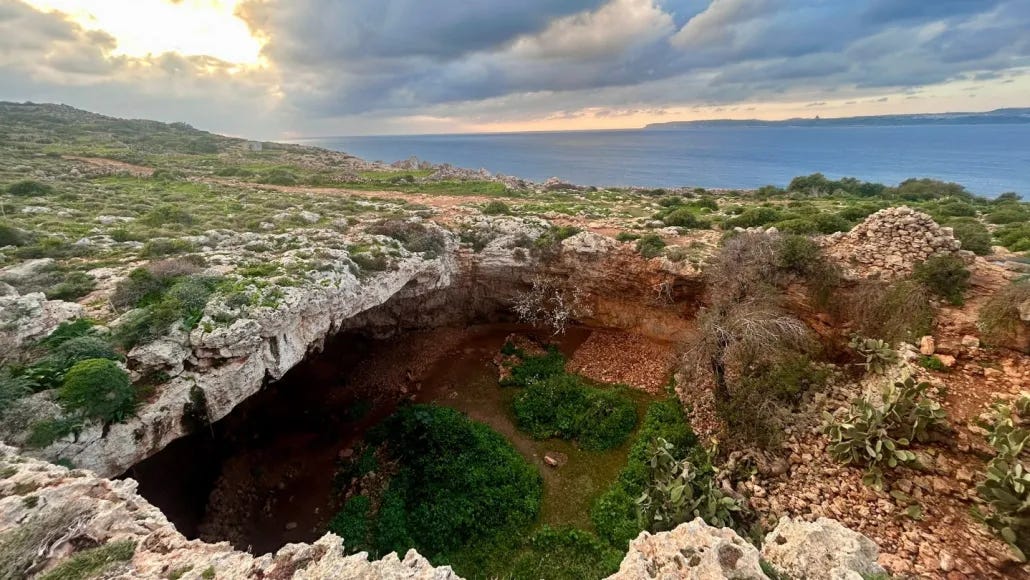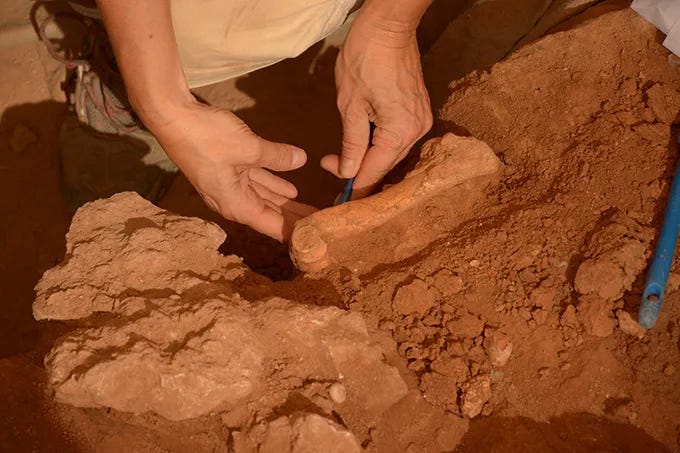Recent archaeological discoveries1 are challenging long-held assumptions about the maritime capabilities of prehistoric hunter-gatherers. Findings from Malta suggest that these early humans possessed the skills necessary for significant sea voyages, indicating a level of sophistication previously unattributed to Stone Age populations.
"This isn't the story of accidental castaways. These were deliberate, capable seafarers," says archaeologist Davide Tanasi.

Evidence from Malta
Excavations at the Latnija site in northern Malta have uncovered artifacts dating back approximately 8,500 years. These include stone tools and animal bones with signs of butchering, suggesting human habitation much earlier than previously believed. The nature of these tools closely resembles those found on the European mainland, implying a connection between the two regions. Given Malta's separation from Sicily by about 85 kilometers of open sea, these findings suggest that these early inhabitants undertook deliberate sea crossings.
Implications for Understanding Prehistoric Seafaring
The evidence from Malta indicates that Stone Age hunter-gatherers were not merely accidental drifters but capable seafarers who could navigate challenging waters. This challenges the notion that systematic maritime activity only began with later, more technologically advanced societies. The successful navigation to Malta would have required not only seaworthy vessels but also knowledge of currents, weather patterns, and celestial navigation.

Broader Context of Mediterranean Migrations
These findings align with other research indicating complex migration patterns in the Mediterranean. For instance, genetic studies have shown that early farming populations from the Eastern Mediterranean colonized islands like Sicily and Sardinia before 2500 BC, suggesting a history of maritime interaction in the region. Additionally, evidence from the island of Favignana indicates that prehistoric hunter-gatherers adapted their diets and lifestyles in response to changing environmental conditions, further highlighting the dynamic nature of human populations in the Mediterranean.
Conclusion
The discoveries in Malta contribute to a growing body of evidence that prehistoric hunter-gatherers possessed advanced seafaring skills, enabling them to navigate and settle across the Mediterranean. These findings prompt a reevaluation of the technological and cognitive abilities of early human populations and underscore the complexity of their migratory and adaptive strategies.
Related Research
Mannino, M. A., et al. (2012). Origin and diet of the prehistoric hunter-gatherers on the Mediterranean Island of Favignana (Ègadi Islands, Sicily). PLoS ONE, 7(11), e49802. https://doi.org/10.1371/journal.pone.0049802
Kennett, D. J., et al. (2020). Maritime migrations: Anthropologist sheds light on the genetic history of ancient populations in Mediterranean islands. The Current. https://news.ucsb.edu/2020/019816/maritime-migrations
Zilhão, J. (2001). Radiocarbon evidence for maritime pioneer colonization at the origins of farming in west Mediterranean Europe. Proceedings of the National Academy of Sciences, 98(24), 14180–14185. https://doi.org/10.1073/pnas.241522898
Scerri, E. M. L., Blinkhorn, J., Groucutt, H. S., Stewart, M., Candy, I., Allué, E., Burguet-Coca, A., Currás, A., Carleton, W. C., Lindauer, S., Spengler, R., Boxleitner, K., Asciak, G., Colucci, M., Gauci, R., Hatton, A., Kutowsky, J., Maier, A., Mata-González, M., … Vella, N. C. (2025). Hunter-gatherer sea voyages extended to remotest Mediterranean islands. Nature, 1–7. https://doi.org/10.1038/s41586-025-08780-y










Share this post